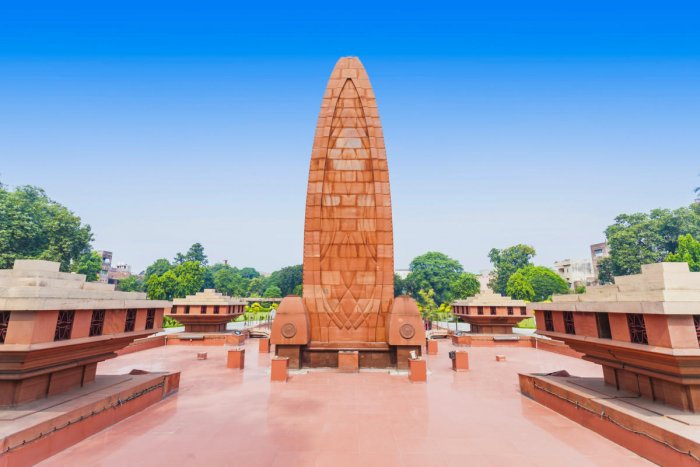Indian History
Jallianwala Bagh Massacre
- 13 Apr 2022
- 5 min read
For Prelims: Jallianwala Bagh Massacre, Rowlatt Act 1919, World War I (1914–18), Non Cooperation Movement (1920–22), Hunter Commission.
For Mains: Non Cooperation Movement (1920–22), History of India’s struggle
Why in News?
Recently, the Prime Minister paid tributes to people killed in the Jallianwala Bagh massacre in 1919.
- He asserted that their unparalleled courage and sacrifice will keep motivating the coming generations. 13th April, 2022 marks the 103 years of the incident.
- Earlier, the Gujarat government marked 100 years of the Pal-Dadhvav killings, calling it a massacre “bigger than the Jallianwala Bagh”.
What is the Jallianwala Bagh Massacre?
- About: The Jallianwala Bagh massacre or the Amritsar massacre of 13th April 1919 accounts for the gruesome execution of hundreds of innocent people by the Gurkha British Indian army on the orders of the then Anglo-Indian Brigadier R.E.H. Dyer.
- These people were protesting peacefully against the Rowlatt Act 1919.
What was the Rowlatt Act 1919?
- During World War I (1914-18) the British government of India enacted a series of repressive emergency powers that were intended to combat subversive activities.
- In this context, this act was passed on the recommendations of the Sedition Committee chaired by Sir Sidney Rowlatt.
- It gave the government enormous powers to repress political activities and allowed detention of political prisoners without trial for two years.
- Background: Mahatma Gandhi wanted non-violent civil disobedience against such unjust laws, which would start with a hartal on 6th April 1919.
- In Punjab, on 9th April 1919, two nationalist leaders, Saifuddin Kitchlew and Dr. Satyapal, were arrested by the British officials without any provocation except that they had addressed protest meetings, and taken to some unknown destination.
- This caused resentment among the Indian protestors who came out in thousands on 10th April to show their solidarity with their leaders.
- To curb any future protest, the government put martial law in place and law and order in Punjab was handed over to Brigadier-General Dyer.
- Day of the Incident: On 13th April, Baisakhi day, a large crowd of people mostly from neighbouring villages, unaware of the prohibitory orders in Amritsar gathered in the Jallianwala Bagh.
- Brigadier-General Dyer arrived on the scene with his men.
- The troops surrounded the gathering under orders from General Dyer and blocked the only exit point and opened fire on the unarmed crowd killing more than 1000 unarmed men, women, and children.
- Aftermath/Significance of the Incident
- Jallianwala Bagh became a key point in the history of India’s struggle for independence and it is now an important monument in the country.
- The Jallianwala Bagh tragedy was one of the causes that led Mahatma Gandhi to begin organising his first large-scale and sustained nonviolent protest (satyagraha) campaign, the Non Cooperation Movement (1920-22).
- The Bengali poet and Nobel laureate Rabindranath Tagore renounced the knighthood that he had received in 1915.
- The then government of India ordered an investigation of the incident (the Hunter Commission), which in 1920 censured Dyer for his actions and ordered him to resign from the military.
UPSC Civil Services Examination, Previous Year Questions (PYQs)
Q. During the Indian Freedom Struggle, why did Rowlatt Act arouse popular indignation? (2009)
(a) It curtailed the freedom of religion
(b) It suppressed the Indian traditional education
(c) It authorized the government to imprison people without trial
(d) It curbed the trade union activities
Ans: (c)







